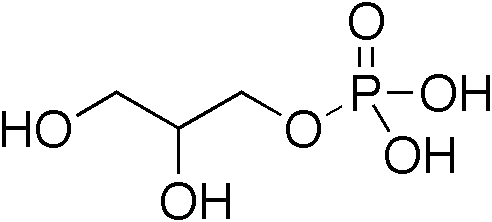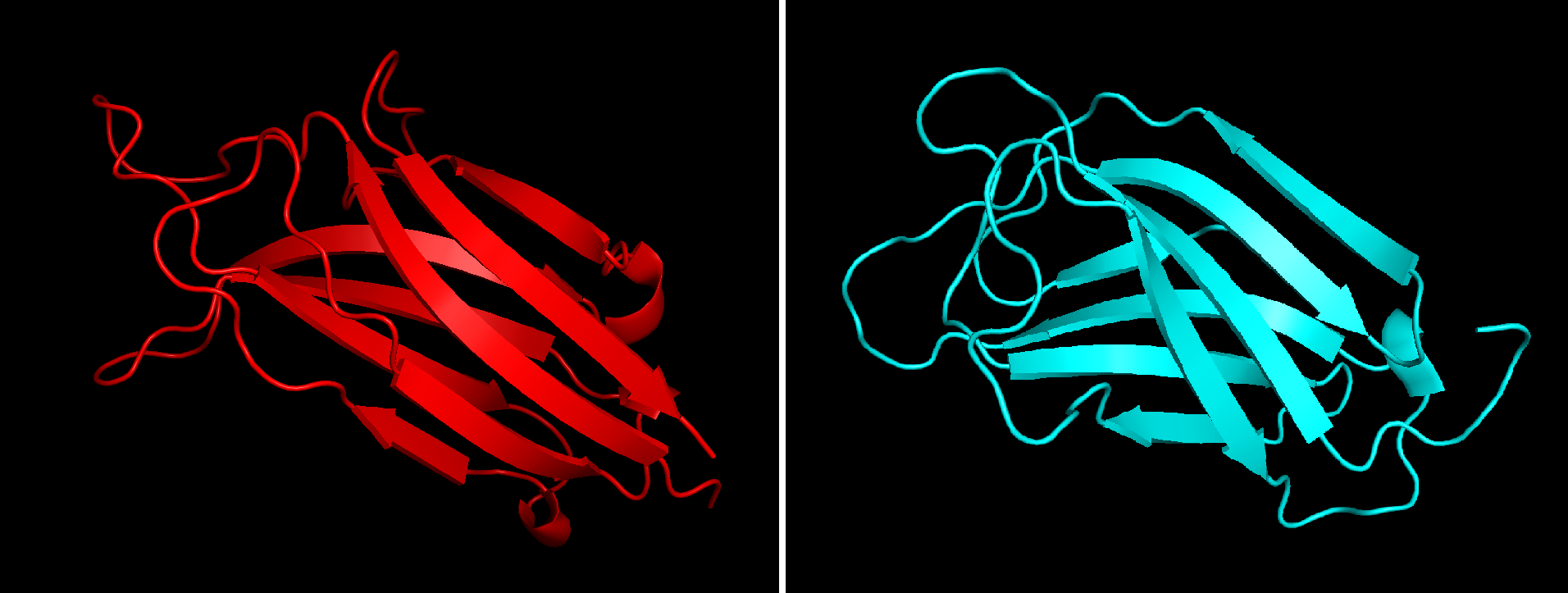|
Inositol-phosphate Phosphatase
The enzyme Inositol phosphate-phosphatase (EC 3.1.3.25) is of the phosphodiesterase family of enzymes. It is involved in the phosphophatidylinositol signaling pathway, which affects a wide array of cell functions, including but not limited to, cell growth, apoptosis, secretion, and information processing. Inhibition of inositol monophosphatase may be key in the action of lithium in treating bipolar disorder, specifically manic depression. The catalyzed reaction: :''myo''-inositol phosphate + H2O \rightleftharpoons ''myo''-inositol + phosphate Nomenclature This enzyme belongs to the family of hydrolases, specifically those acting on phosphoric monoester bonds. The systematic name is ''myo''-inositol-phosphate phosphohydrolase. Other names in common use include: * ''myo''-inositol-1(or 4)-monophosphatase, * inositol 1-phosphatase, * L-''myo''-inositol-1-phosphate phosphatase, * ''myo''-inositol 1-phosphatase, * inositol phosphatase, * inositol monophosphate phosphatase, * ... [...More Info...] [...Related Items...] OR: [Wikipedia] [Google] [Baidu] |
Inositol Monophosphatase 1
Inositol monophosphatase 1 is an enzyme that in humans is encoded by the ''IMPA1'' gene. Structure Inositol monophosphatase 1 (IMPA1) is a homodimeric enzyme with each subunit consisting of approximately 277 amino acids and a molecular weight of ~30 kDa. The protein adopts a penta-layered αβαβα core structure, characteristic of the metallophosphatase superfamily, which is also observed in related enzymes like fructose 1,6-bisphosphatase. Each monomer's active site contains three magnesium ions arranged in an octahedral coordination geometry, bound by conserved residues including Glu70, Asp90, Asp93, and Asp220. Structural studies using X-ray crystallography (e.g., PDB entries 1IMA, 1IMB) reveal that the dimeric arrangement facilitates substrate recognition and catalysis. The enzyme features an Inositol_P domain (Pfam: PF00459), which mediates its magnesium-dependent phosphatase activity and interaction with substrates like myo-inositol monophosphate. These structural feat ... [...More Info...] [...Related Items...] OR: [Wikipedia] [Google] [Baidu] |
Fructose 1,6-bisphosphatase
The enzyme fructose bisphosphatase (EC 3.1.3.11; systematic name D-fructose-1,6-bisphosphate 1-phosphohydrolase) catalyses the conversion of fructose-1,6-bisphosphate to fructose 6-phosphate in gluconeogenesis and the Calvin cycle, which are both anabolic pathways: :D-fructose 1,6-bisphosphate + H2O = D-fructose 6-phosphate + phosphate Phosphofructokinase (EC 2.7.1.11) catalyses the reverse conversion of fructose 6-phosphate to fructose-1,6-bisphosphate, but this is not just the reverse reaction, because the co-substrates are different (and so thermodynamic requirements are not violated). The two enzymes each catalyse the conversion in one direction only, and are regulated by metabolites such as fructose 2,6-bisphosphate so that high activity of one of them is accompanied by low activity of the other. More specifically, fructose 2,6-bisphosphate allosterically inhibits fructose 1,6-bisphosphatase, but activates phosphofructokinase-I. Fructose 1,6-bisphosphatase is invol ... [...More Info...] [...Related Items...] OR: [Wikipedia] [Google] [Baidu] |
Biology Of Bipolar Disorder
Bipolar disorder is a mood disorder characterized by alternating periods of manic (elevated) and depressed mood. While the exact cause and mechanism of bipolar disorder remain unknown, ongoing research focuses on uncovering its biological origins. Although no single gene has been identified as the cause, numerous genes are associated with an increased risk of developing the disorder. Gene-environment interactions are also believed to play a role in predisposing individuals to bipolar disorder.Neuroimaging and postmortem studies have identified abnormalities in several brain regions, with the ventral prefrontal cortex and amygdala being most frequently implicated. Dysfunction within the emotional circuits of these regions has been hypothesized as a potential mechanism underlying bipolar disorder. Additionally, evidence points to abnormalities in neurotransmission, intracellular signaling, and cellular functioning as contributing factors. Research into bipolar disorder, particularl ... [...More Info...] [...Related Items...] OR: [Wikipedia] [Google] [Baidu] |
Mood Disorders
A mood disorder, also known as an affective disorder, is any of a group of conditions of mental and behavioral disorder where the main underlying characteristic is a disturbance in the person's mood. The classification is in the ''Diagnostic and Statistical Manual of Mental Disorders'' (DSM) and International Classification of Diseases (ICD). Mood disorders fall into seven groups, including; abnormally elevated mood, such as mania or hypomania; depressed mood, of which the best-known and most researched is major depressive disorder (MDD) (alternatively known as clinical depression, unipolar depression, or major depression); and moods which cycle between mania and depression, known as bipolar disorder (BD) (formerly known as manic depression). There are several subtypes of depressive disorders or psychiatric syndromes featuring less severe symptoms such as dysthymic disorder (similar to MDD, but longer lasting and more persistent, though often milder) and cyclothymic disorder ( ... [...More Info...] [...Related Items...] OR: [Wikipedia] [Google] [Baidu] |
Blood–brain Barrier
The blood–brain barrier (BBB) is a highly selective semipermeable membrane, semipermeable border of endothelium, endothelial cells that regulates the transfer of solutes and chemicals between the circulatory system and the central nervous system, thus protecting the brain from harmful or unwanted substances in the blood. The blood–brain barrier is formed by endothelial cells of the Capillary, capillary wall, astrocyte end-feet ensheathing the capillary, and pericytes embedded in the capillary basement membrane. This system allows the passage of some small molecules by passive transport, passive diffusion, as well as the selective and active transport of various nutrients, ions, organic anions, and macromolecules such as glucose and amino acids that are crucial to neural function. The blood–brain barrier restricts the passage of pathogens, the diffusion of solutes in the blood, and Molecular mass, large or Hydrophile, hydrophilic molecules into the cerebrospinal fluid, while a ... [...More Info...] [...Related Items...] OR: [Wikipedia] [Google] [Baidu] |
Valproate
Valproate (valproic acid, VPA, sodium valproate, and valproate semisodium forms) are medications primarily used to treat epilepsy and bipolar disorder and prevent migraine headaches. They are useful for the prevention of seizures in those with absence seizures, partial seizures, and generalized seizures. They can be given intravenously or by mouth, and the tablet forms exist in both long- and short-acting formulations. Common side effects of valproate include nausea, vomiting, somnolence, and dry mouth. Serious side effects can include liver failure, and regular monitoring of liver function tests is therefore recommended. Other serious risks include pancreatitis and an increased suicide risk. Valproate is known to cause serious abnormalities or birth defects in the unborn child if taken during pregnancy, and is contra-indicated for women of childbearing age unless the drug is essential to their medical condition and the person is also prescribed a contraceptive. Reproductive ... [...More Info...] [...Related Items...] OR: [Wikipedia] [Google] [Baidu] |
Lithium (medication)
Certain lithium compounds, also known as lithium salts, are used as psychiatric medication, primarily for bipolar disorder and for major depressive disorder. Lithium is taken orally (by mouth). Common side effects include increased urination, shakiness of the hands, and increased thirst. Serious side effects include hypothyroidism, diabetes insipidus, and lithium toxicity. Blood level monitoring is recommended to decrease the risk of potential toxicity. If levels become too high, diarrhea, vomiting, poor coordination, sleepiness, and ringing in the ears may occur. Lithium is teratogenic and can cause birth defects at high doses, especially during the first trimester of pregnancy. The use of lithium while breastfeeding is controversial; however, many international health authorities advise against it, and the long-term outcomes of perinatal lithium exposure have not been studied. The American Academy of Pediatrics lists lithium as contraindicated for pregnancy and lactat ... [...More Info...] [...Related Items...] OR: [Wikipedia] [Google] [Baidu] |
Inositol Triphosphate
Inositol trisphosphate or inositol 1,4,5-trisphosphate abbreviated InsP3 or Ins3P or IP3 is an inositol phosphate signaling molecule. It is made by hydrolysis of phosphatidylinositol 4,5-bisphosphate (PIP2), a phospholipid that is located in the plasma membrane, by phospholipase C (PLC). Together with diacylglycerol (DAG), IP3 is a second messenger molecule used in signal transduction in biological cells. While DAG stays inside the membrane, IP3 is soluble and diffuses through the cell, where it binds to its receptor, which is a calcium channel located in the endoplasmic reticulum. When IP3 binds its receptor, calcium is released into the cytosol, thereby activating various calcium regulated intracellular signals. Properties Chemical formula and molecular weight IP3 is an organic molecule with a molecular mass of 420.10 g/mol. Its empirical formula is C6H15O15P3. It is composed of an inositol ring with three phosphate groups bound at the 1, 4, and 5 carbon positions, and three ... [...More Info...] [...Related Items...] OR: [Wikipedia] [Google] [Baidu] |
Diacylglycerol
A diglyceride, or diacylglycerol (DAG), is a glyceride consisting of two fatty acid chains covalently bonded to a glycerol molecule through ester linkages. Two possible forms exist, 1,2-diacylglycerols and 1,3-diacylglycerols. Diglycerides are natural components of food fats, though minor in comparison to triglycerides. DAGs can act as surfactants and are commonly used as emulsifiers in processed foods. DAG-enriched oil (particularly 1,3-DAG) has been investigated extensively as a fat substitute due to its ability to suppress the accumulation of body fat; with total annual sales of approximately USD 200 million in Japan since its introduction in the late 1990s till 2009. Production Diglycerides are a minor component of many seed oils and are normally present at ~1–6%; or in the case of cottonseed oil as much as 10%. Industrial production is primarily achieved by a glycerolysis reaction between triglycerides and glycerol. The raw materials for this may be either vegetable oil ... [...More Info...] [...Related Items...] OR: [Wikipedia] [Google] [Baidu] |
PIP2 (other)
PIP2, or phosphatidylinositol biphosphate, is the products obtained by cleavage of PIP3, or by phosphorylation of PI(3)P, PI(4)P or PI(5)P. 'PIP2' most frequently refers to: * Phosphatidylinositol 4,5-bisphosphate, also known as PI(4,5)P2 The other PIP2 lipids are: * Phosphatidylinositol 3,4-bisphosphate, also known as PI(3,4)P2 * Phosphatidylinositol 3,5-bisphosphate Phosphatidylinositol 3,5-bisphosphate (PtdIns(3,5)P2) is one of the seven phosphoinositides found in eukaryotic cell membranes. In quiescent cells, the PtdIns(3,5)P2 levels, typically quantified by HPLC, are the lowest amongst the constitutively ..., also known as PI(3,5)P2 {{Letter-NumberCombDisambig Phospholipids ... [...More Info...] [...Related Items...] OR: [Wikipedia] [Google] [Baidu] |
Phospholipase C
Phospholipase C (PLC) is a class of membrane-associated enzymes that cleave phospholipids just before the phosphate group (see figure). It is most commonly taken to be synonymous with the human forms of this enzyme, which play an important role in eukaryotic cell physiology, in particular signal transduction pathways. Phospholipase C's role in signal transduction is its cleavage of phosphatidylinositol 4,5-bisphosphate (PIP2) into diacyl glycerol (DAG) and inositol 1,4,5-trisphosphate (IP3), which serve as second messengers. Activators of each PLC vary, but typically include heterotrimeric G protein subunits, protein tyrosine kinases, small G proteins, Ca2+, and phospholipids. There are thirteen kinds of mammalian phospholipase C that are classified into six isotypes (β, γ, δ, ε, ζ, η) according to structure. Each PLC has unique and overlapping controls over expression and subcellular distribution. However, PLC is not limited to mammals, and is present in bacteria a ... [...More Info...] [...Related Items...] OR: [Wikipedia] [Google] [Baidu] |
Glucose 6-phosphate
Glucose 6-phosphate (G6P, sometimes called the Robison ester) is a glucose sugar phosphorylated at the hydroxy group on carbon 6. This dianion is very common in cells as the majority of glucose entering a cell will become phosphorylated in this way. Because of its prominent position in cellular chemistry, glucose 6-phosphate has many possible fates within the cell. It lies at the start of two major metabolic pathways: glycolysis and the pentose phosphate pathway. In addition to these two metabolic pathways, glucose 6-phosphate may also be converted to glycogen or starch for storage. This storage is in the liver and muscles in the form of glycogen for most multicellular animals, and in intracellular starch or glycogen granules for most other organisms. Production From glucose Within a cell, glucose 6-phosphate is produced by phosphorylation of glucose on the sixth carbon. This is catalyzed by the enzyme hexokinase in most cells, and, in higher animals, glucokinase in certain ce ... [...More Info...] [...Related Items...] OR: [Wikipedia] [Google] [Baidu] |







